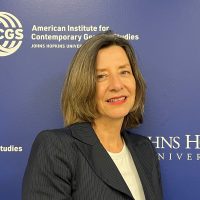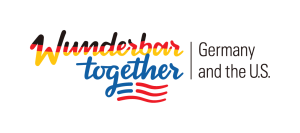
Fibonacci Blue via Flickr
Welcoming Places – Few and Far Between?

Susanne Dieper
Director of Programs and Grants
Susanne Dieper is the Director of Programs and Grants at AICGS. She oversees the Institute’s programs and projects within the three AICGS program areas, manages all AICGS fellowships, and is in charge of grant writing. Her current focus is on issues related to transatlantic relations, immigration and integration, diversity, the next generation of leaders, workforce education, and reconciliation. She develops programs that align with the mission of AICGS to better understand the challenges and choices facing Germany and the United States in a broader global arena.
Previously, Ms. Dieper was in charge of organizational and project management at AICGS as well as human resource development and board of trustees relations. Prior to joining AICGS, she worked in transatlantic exchange programs, language acquisition, as well as the insurance industry in Germany.
Ms. Dieper holds an MBA from Johns Hopkins University with a concentration in International Business and an MA in English Linguistics and Literature, History, and Spanish from the University of Cologne. She has completed course work in nonprofit management at Johns Hopkins University.
__
These days negative and at times dehumanizing rhetoric aimed at migrants—both legal and undocumented and of varying religious and ethnic make-up—are grabbing headlines around the globe. The trend to ignore and the refusal to support those in need appear ubiquitous. Most of Europe is watching idly as refugees aboard rescue ships are kept from disembarking to safety, some countries refusing to receive them. The Turkish government is employing harsh methods when dealing with the millions of refugees currently in the country and is threatening to send Syrians back to a homeland that is imploding. India, similar to China, is detaining many of its citizens in camps and prisons. And the U.S. is set to activate a new “public charge” policy aimed at certain legal immigrants, and can now bar migrants from Central America, many of whom are fleeing violence and persecution, from entering the United States, requiring them to apply for asylum in the countries they pass through.
The news is disheartening for many, especially those in need as well as those who differ from the mainstream. At the same time, many local communities worldwide, and particularly in the U.S. and Germany, are quietly but fervently doing their part to embrace newcomers in their midst and strengthen the social and economic fabric of their cities and towns. Their aim is to create a sense of togetherness that transcends physical, ethnic, or ideological differences among the population and help their communities become strong and thrive.
Many local communities worldwide are quietly but fervently doing their part to embrace newcomers in their midst and strengthen the social and economic fabric of their cities and towns.
In the Midwest of the United States one can find many of those places. As part of the WunderbarTogether project “Integration – Made in Germany,” AGI conducted a week-long trip with a German delegation of integration experts and practitioners to Cincinnati and Dayton, OH; Louisville, KY; and Minneapolis, MN. What we found was not only an affinity for all things German and a welcoming atmosphere to our German visitors, but also a general attitude of embracing and appreciating what other people and cultures bring to the table culturally, linguistically, and economically. Germans have long admired the U.S. for being a country of immigrants where integrating a mix of different people is rarely seen as problematic. Germany, a newcomer to being an immigration country, has increasingly been confronted with the challenge of welcoming people of different origins and integrating them into society and the labor market—in particular since it opened its borders to close to a million refugees in 2015. Where the United States was once the beacon of offering shelter and opportunities to newcomers, Germany now can offer its own experiences and lessons learned.
The goal is the same: engage new and old residents to the benefit of the entire city.
The U.S. cities mentioned offer many inspiring lessons. All have either created a Task Force on immigration and immigrant and refugee affairs, have welcoming offices at City Hall, and are in the beginning stages of becoming a Welcoming City or have already completed the process. The goal is the same: engage new and old residents to the benefit of the entire city. Several local NGOs and community colleges support struggling families and individuals (long-term or new residents) and provide the educational, financial, and healthcare tools they need to survive and ultimately succeed. Communities strive to ensure the safety and opportunity of their residents, eliminate disparities, and build strong, multicultural communities. Although our delegation visited each city for only a day, the cities’ welcoming spirit was generously extended our way. What we found in each effort was the communal spirit of supporting immigrants and refugees as well as the wider community. Several German cities have also instituted welcoming initiatives of different kinds and while many uniquely fit their particular needs, the common goal of strengthening their communities as a whole unites these efforts. Learning about different approaches in the U.S. and Germany can ultimately benefit both countries.
While the news often tends to emphasize and sensationalize crises, it is worth pointing to the numerous efforts underway across the U.S. and Germany that seek to help, welcome, and unite, rather than tear apart and exclude. As the motto of the Year of German-American Friendship shows, Wunderbar (or Wonderful) Together seems to resonate in communities like Cincinnati, Dayton, Louisville, and Minneapolis. As visitors to the cities, our delegation was struck by the warm welcome and we hope to spread the message within and beyond the U.S. that welcoming places do exist.








